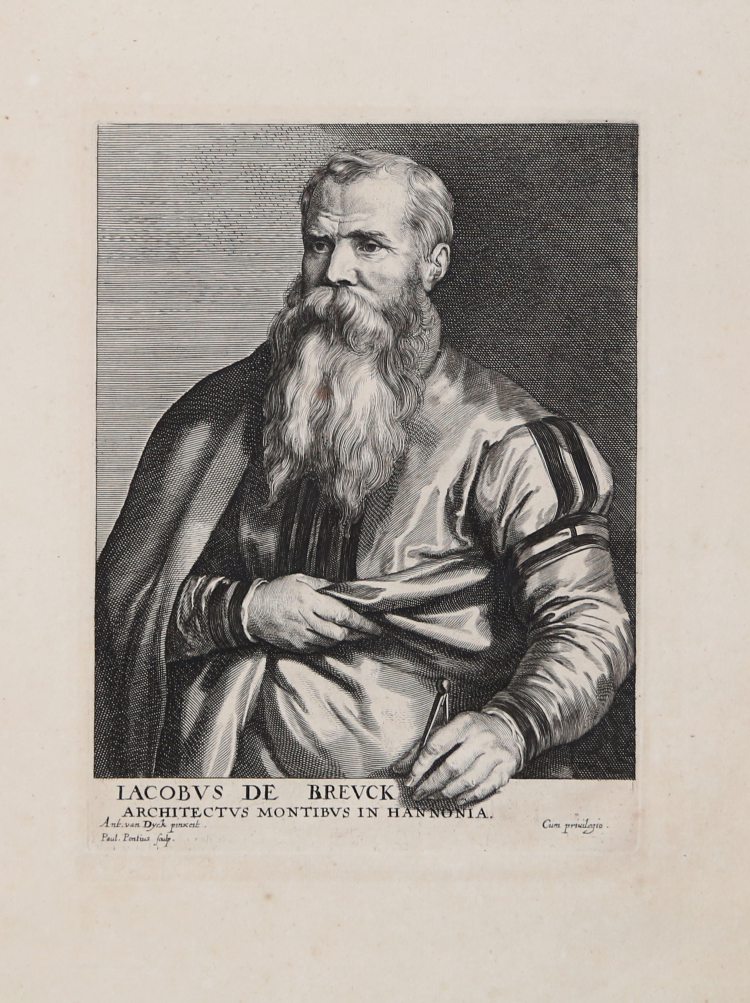



| Riferimento: | S7547 |
| Autore | Paulus PONTIUS |
| Anno: | 1645 ca. |
| Misure: | 175 x 245 mm |


| Riferimento: | S7547 |
| Autore | Paulus PONTIUS |
| Anno: | 1645 ca. |
| Misure: | 175 x 245 mm |
Incisione tratta dalla celebre raccolta Icones principum, virorum, doctorum, pictorum, chalcographorum, di Anton van Dyck, edita per la prima volta ad Anversa verso il 1640.
Opera celebre ed importante, vero monumento dell’arte incisoria fiamminga del sec. XVIII, contiene le biografie ed i ritratti degli uomini illustri che Van Dyck aveva conosciuto e con i quali aveva avuto importanti rapporti.
L’artista ne eseguì le effigi in numerosi dipinti e disegni che poi decise di pubblicare, affidandone la trasposizione calcografica ai migliori incisori del suo tempo, come Bolswert, Pontius, Vorsterman, de Jode, Hollar, molti dei quali aveva avuto come condiscepoli nell’atelier di Rubens.
"Sir Anthony Van Dyck stands out as the solitary great etcher of the school. Portrait etching had scarcely had an existence before his time, and in his work it suddenly appears at the highest point ever reached in the art" (Hind, p. 165). "The plan of this publication took shape after Van Dyck returned from Italy (1626) and before he went to England (1632). He made careful preparatory drawings in chalk and brush for the publication. He directed and revised the work of the engravers, the best of the Rubens circle; he collaborated with his etching needle in some of the plates and himself etched the most beautiful set, mainly portraits of artists. One of the most brilliant in human characterization is the portrait of Peter Brueghel the Younger, son of the great Peasant Brueghel. It is remarkable that the etching appeared in this sketchy form in the book, proving that the master regarded it as finished. All interest is focussed on the wonderful had. The first edition was published in Antwerp in 1635-1636. Yet it was not complete, and the title-page did not appear before the Gillis Hendricx edition of 1645, engraved by Jacob Neels" (Benesch, Artistic and Intellectual Trends, p. 32.) Hofer, Baroque Book Illustrations 132.
Acquaforte con ritocchi al bulino, stampata su carta vergata coeva, filigrana del “giullare”, con margini, in ottimo stato di conservazione.
Paulus PONTIUS (Anversa 1603 – 1658)
|
Pontius, Paulus. - Forma latina del nome dell'incisore Paul du Pont Fu allievo di L. Vorsterman; lavorò poi (1624-31) per P. P. Rubens, del quale interpretò ottimamente le opere, che riprodusse in gran numero. Celebre incisore di ritratti, fu pure elegante interprete di A. van Dyck, oltre che di C. de Crayer, G. Coques, Tiziano, Velázquez, ecc
|
Paulus PONTIUS (Anversa 1603 – 1658)
|
Pontius, Paulus. - Forma latina del nome dell'incisore Paul du Pont Fu allievo di L. Vorsterman; lavorò poi (1624-31) per P. P. Rubens, del quale interpretò ottimamente le opere, che riprodusse in gran numero. Celebre incisore di ritratti, fu pure elegante interprete di A. van Dyck, oltre che di C. de Crayer, G. Coques, Tiziano, Velázquez, ecc
|